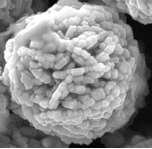source: Electronics Weekly news
Israeli 3D printing firm Nano Dimension has developed novel copper nanoparticles that are resistant to oxidation, and fuse into conductive lines after sintering at <160°C.
“The main challenge in developing nano-copper ink is oxidation of the particles, including during sintering into a continuous conductive trace,” said the firm. “Typically, sintering of copper nanoparticles requires high temperatures, lasers or powerful lamps in an oxygen-free atmosphere, which can be an expensive and complex process.”
The particles are packed into a spherical cluster and “have properties similar to a core/shell structure”, said the firm.
If ink-jet inks can be made from the particles, printing on flexible films of polyethylene terephthalate (PET), which can withstand temperatures of up to 150°C could be possible, allowing the printing of radio frequency identification antennas, membrane switches and sensors.































